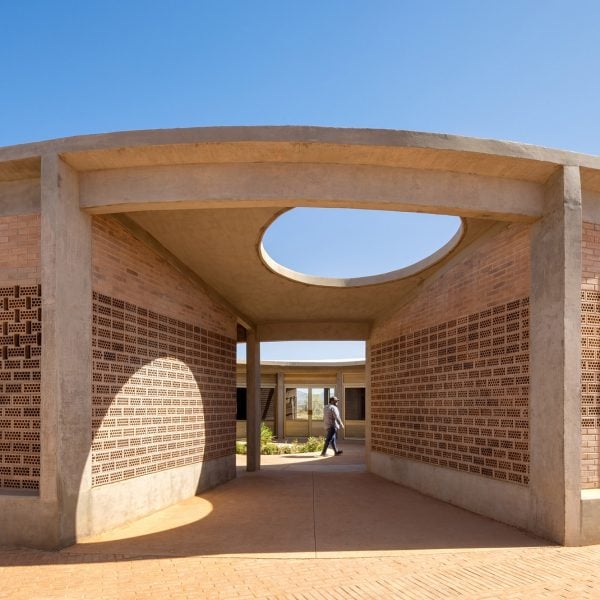Architecture studio Fernanda Canales has created a semi-open community centre for the elderly in Mexico City, using a circular form and simple materials
The House for the Elderly is located in Neco, in the border state of Sonora, an arid environment with social and economic problems related to cross-border smuggling. It has been shortlisted in the health and wellbeing category of the 2024 Dezeen Awards.
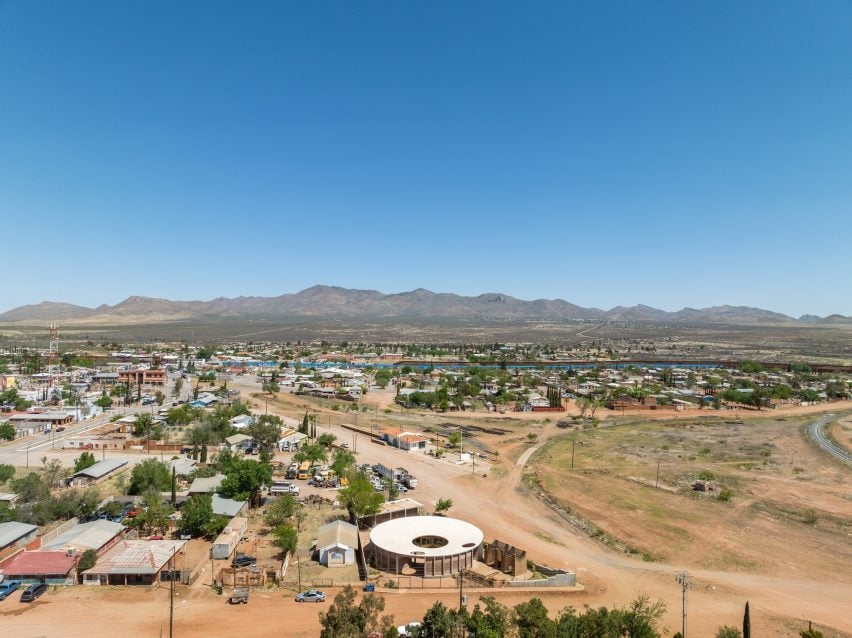
The federal government initiated the 450-square-foot (42-square-metre) structure, which was designed to be welcoming for elderly community members who can access various health and social services there.
Because of limited local resources, the Fernanda Canales team opted to use simple materials with minimal finishes to create an economical project that can be maintained easily and locally.
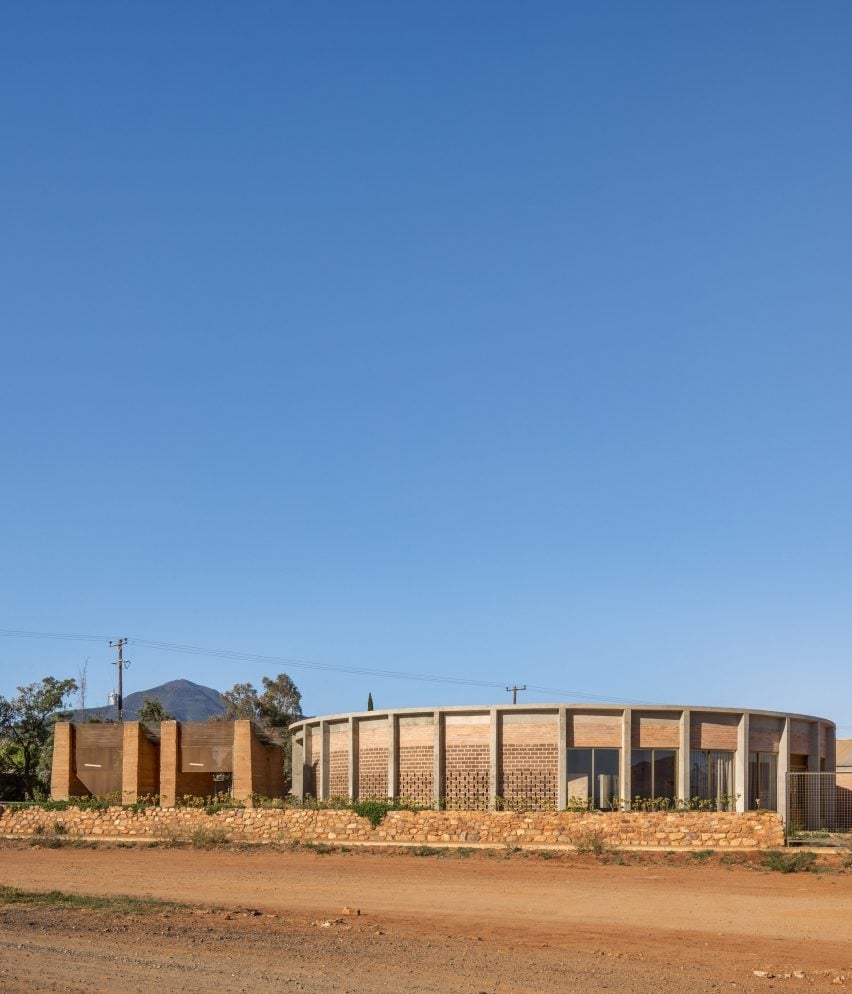
Located on a small, angular plot, the project consists of two primary structures – one circular and one rectangular.
“This responds to the desire to make the most of the plot’s angular geometry and avoid residual spaces,” said the team.
“Thus, the centerpiece is the circular building, located in the widest part of the plot, and the small rectangular block serves as a second access and transition zone to generate different gradients between the public, semi-public, and private.”
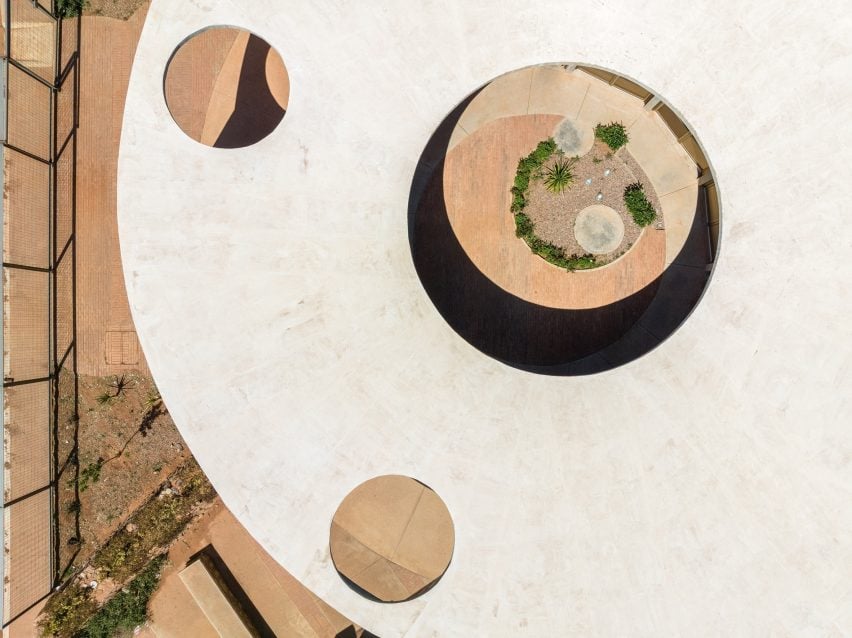
The circular structure has a concrete slab and column structure, with minimum spacing to allow for easy construction.
A main pathway leads to the centre of the structure, a courtyard that allows for circulation to different points in the single-storey structure. The interior spaces are wider towards the back, where the studio includes spaces for gathering.
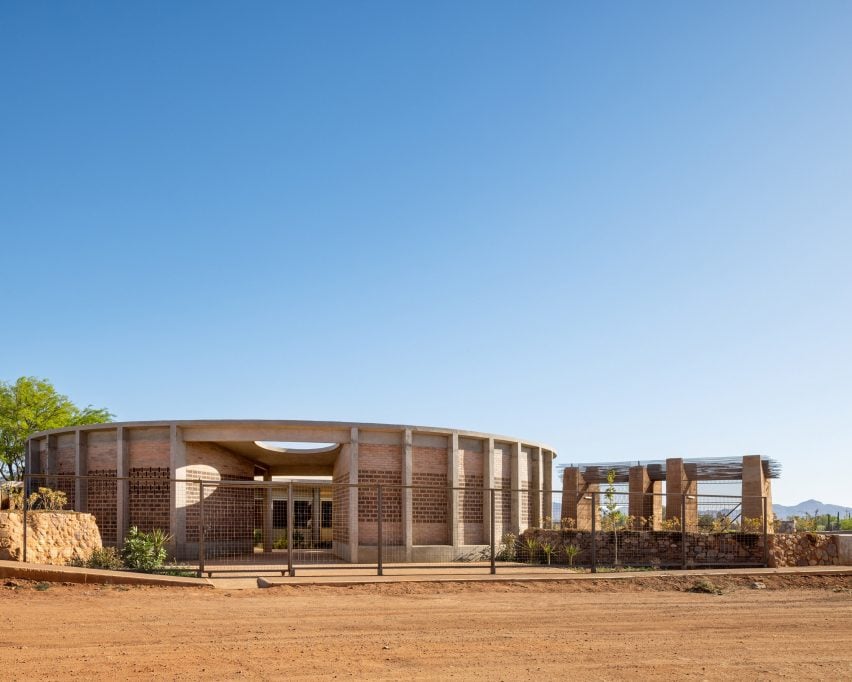
Brick walls line the facade and were given perforations to allow for natural ventilation, while three oculi were placed in the circular concrete slab that acts as a ceiling to bring light into the outdoor circulation areas.
At the back of the site is a smaller rectangular building dedicated to the health functions of the facility. It has similar concrete beams and brick walls.
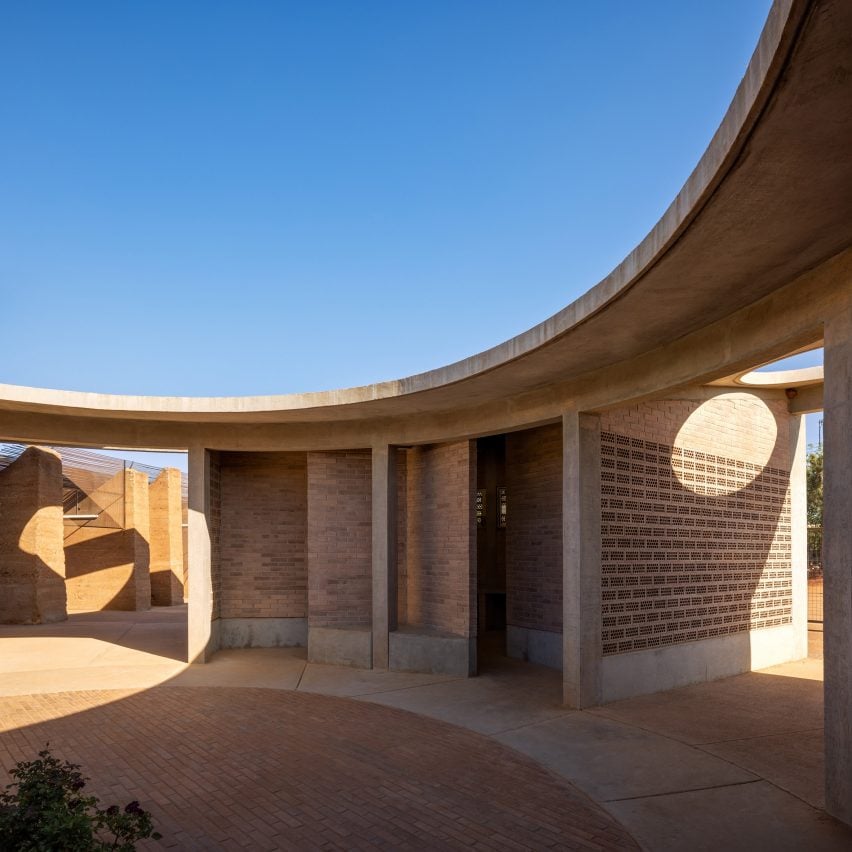
Where the site tapers to a point, a series of adobe-clad columns with semi-circular cut-outs at the top hold metal rods to provide visual interest and shelter from the street.
According to the studio, the basic materials were chosen to make the structure fit in with the surroundings, a mix of residential and industrial structures. Every element of the structure, from the doors to the light fixtures, was designed to be easily and locally replaceable.
A series of natural stone walls were placed on the site, sheltering gardens that create additional spaces for gathering.
“It is a domestic-scale building designed with accessibility and a sense of shelter in mind,” said the studio.
“Developed on a single level, it centers around a patio and perimeter gardens to achieve cross-ventilation and natural lighting in all spaces.”
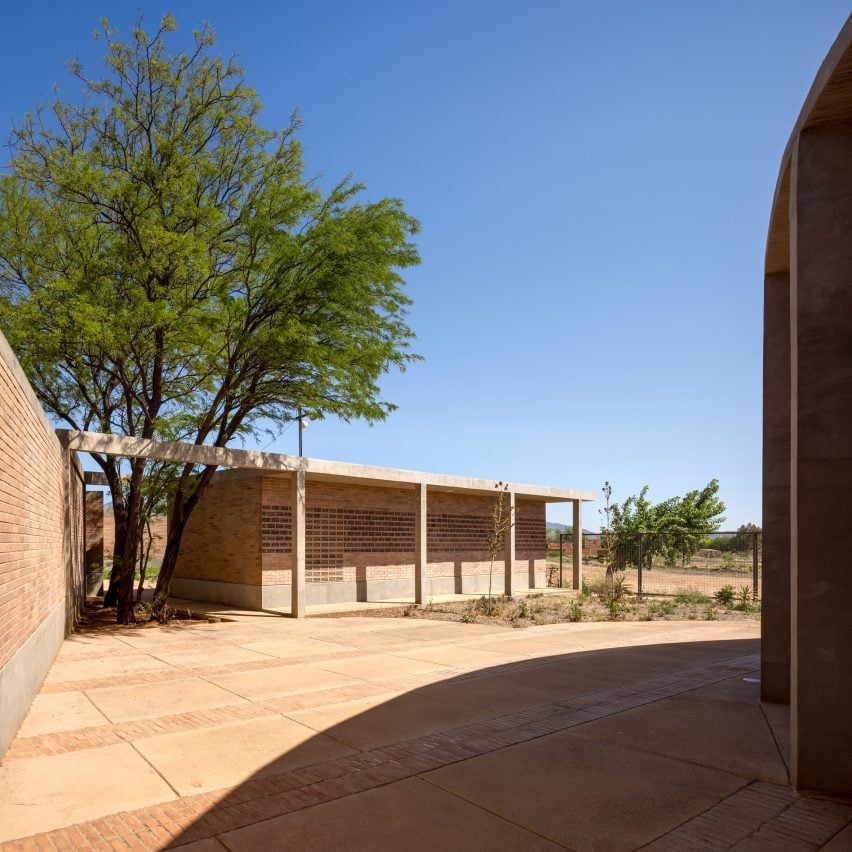
Fernanda Canales founded her eponymous studio in 2002. Since then, she has created residential projects such as a black concrete house with green roofs in a Mexican forest.
She also took part, alongside fellow Mexicans Tatiana Bilbao and Frida Escobedo, in completing an experimental social housing community in Hidalgo.
The photography is by Rafael Gamo.
Project credits:
Architects: Fernanda Canales; Ángela Vizcarra, Alberto García Valladares, Rodrigo Ducoing, Yazmin Hernández, Tania Sánchez, Christian Ortega, Julio Romero
Consultants: Patio Taller de Arquitectura y Paisaje (landscape); NSA Lighting (lighting); FVS ingeniería (structural engineering).
Contractor: ICCARSON Desarrollos

